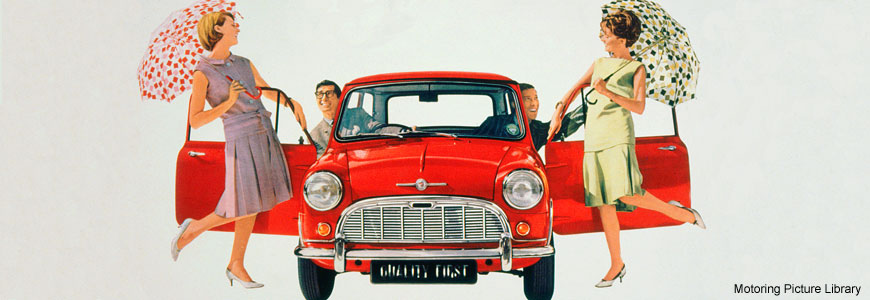
This month we’re pleased to welcome guest blogger Rachel Harris-Gardiner as she explores the exciting world of 1960s saloon racers.
The start of the 1960s saw many social changes. One of the biggest was the advent of the affordable car. The Austin Mini’s low price point put it in reach of more people than ever before. Other compact, price-conscious saloons followed.
Women were one of the groups that really benefitted from this opening-up of the automotive market. They tended to have less earning power than men, and only wealthy women were able to purchase their own cars. In the 1960s, this began to change.
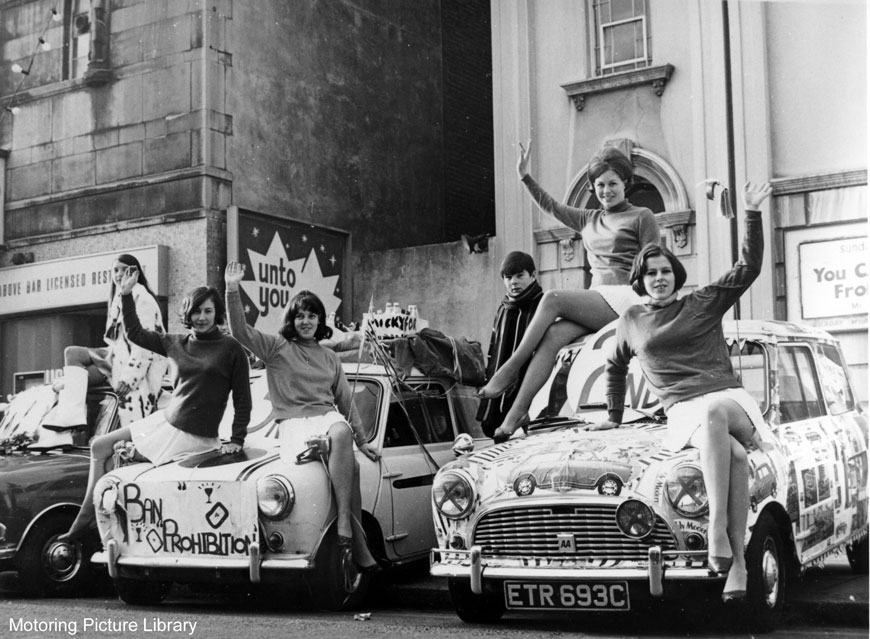
Racing cars, too, were within reach of more potential drivers than ever before. A Mini Cooper could be fitted with an after-market tuning kit and made track-ready quite easily. Again, some of the biggest beneficiaries of this development were budding female racers. The daughters of women who had learned to handle cars and other machinery during the War, buoyed by the first rumblings of both youth culture and the Second Wave of feminism, were unafraid.
The first of these was Christabel Carlisle, a pretty, clever piano teacher from Surrey, who claims she only started racing because she found spectating so dull. Between 1960 and 1963, she competed all around the UK and in Europe, usually in a Don Moore-prepared Mini Cooper. Her best finish was probably a second place in the BSRC race at Brands Hatch in 1961, although she was a frequent visitor to the top three. She retired in 1963 after a terrible accident, in which a marshal was killed.
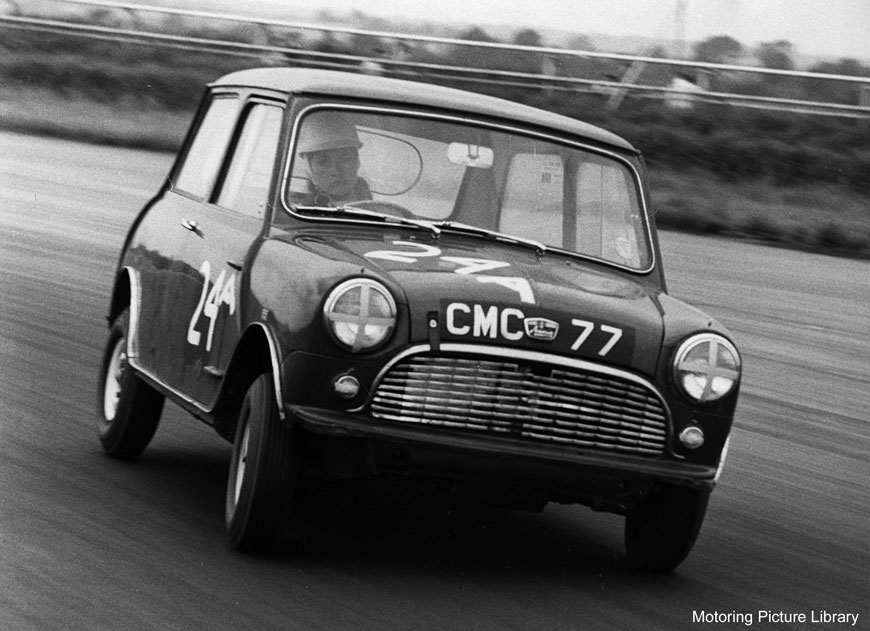
By 1963, Christabel was not the only girl in the BSCC (the forerunner of the BTCC). Michelle Burns-Greig was another Mini racer who was more famous for her racing numberplate, which read “SEX1”, than for her actual driving. Her best finish was probably an eleventh place at Crystal Palace, in 1963.
There were four women drivers racing that day: Christabel, Michelle, Elizabeth Jones and Anita Taylor. Liz Jones was slightly older, but of the same experience level. She was seventh. Christabel was third. Anita Taylor was tenth, in a Ford Anglia.
Anita was the sister of Trevor Taylor, the Lotus Grand Prix driver. She is most associated with Ford cars, and was a Ford works driver. Her best season in saloons was 1966, when she raced a Broadspeed Anglia. Her best finish was sixth, at Crystal Palace, and she won her class at Silverstone. Later, she would race sportscars in the USA, as part of an all-female team.
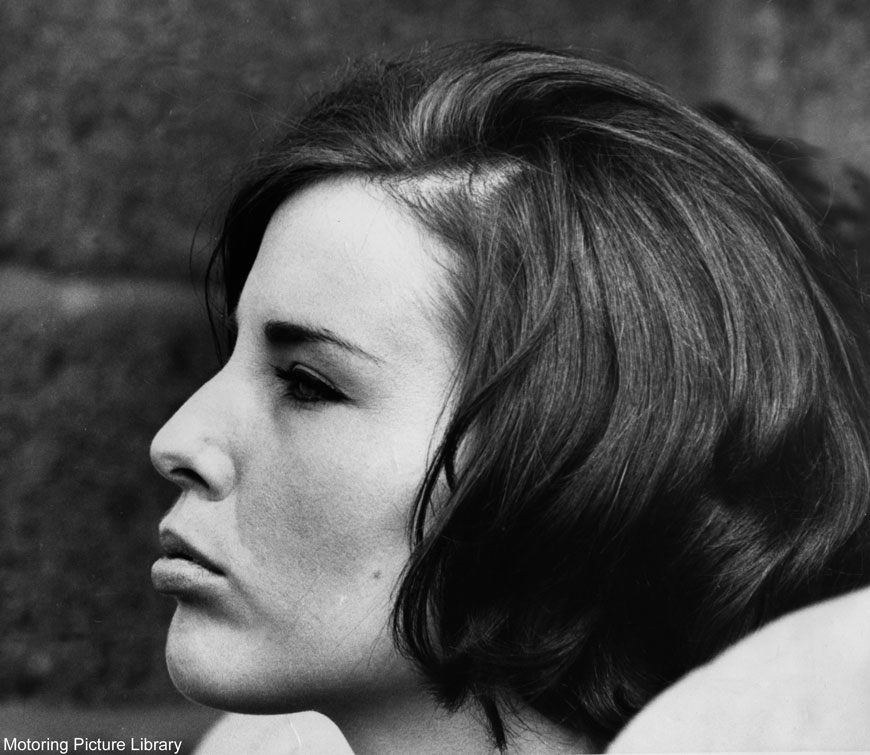
Anita was a popular face on the British racing scene, being talented, well-connected and beautiful. Her popularity proved a double-edged sword; in her later days with Ford, she was frustrated at being used more as a promotional model than the racer she was. Even the notoriously conservative motor industry was waking up to girl racers, albeit in a rather awkward way.
At the lower levels of British saloon racing, still more female drivers in production cars made their mark: Mary Taylor in her Mini, Clare Newbold in an Anglia, Rona Pearson, another Mini driver who would go on to race at the Nürburgring, and Pat Coundley, who competed mainly in hillclimbs in her Mini. The First Ladies’ International Racing Team (FLIRT) was formed by Jacqui Smith, Joey Cook and her sister, Jacqui Bond-Smith. Their Mini Marcos was a steady presence in Britain, and at the Nürburgring.
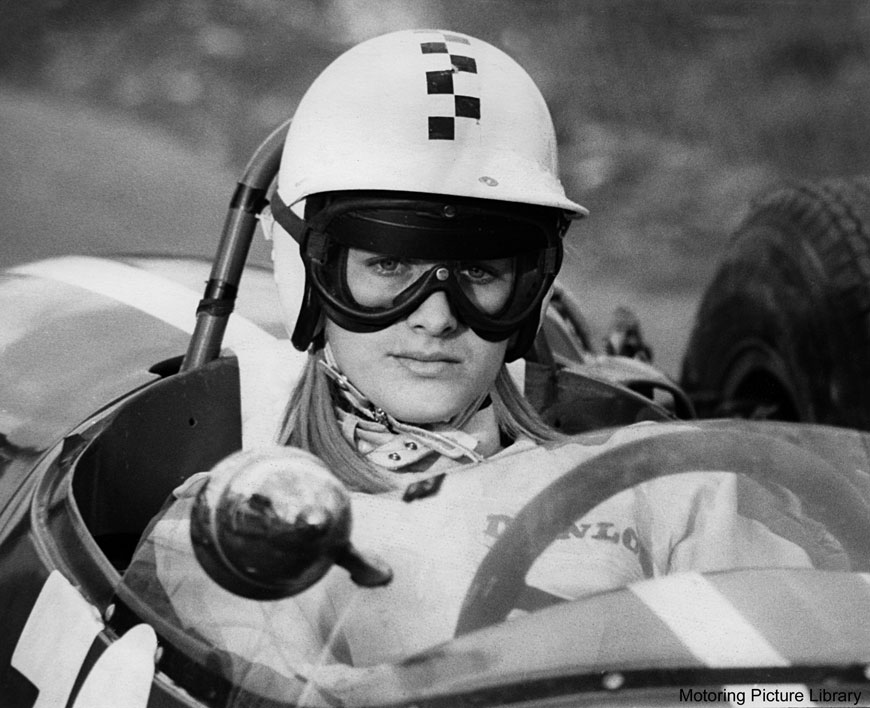
The rise of the young female saloon driver was not only a British phenomenon. Liane Engeman moved from the Netherlands to the UK to further her racing career. She drove Minis and Imps in the BSRC from 1966 onwards, and was soon racing Anglias and a series of Alfa Romeos in the European Touring Car Championship. Between then and 1973, she scored many top-five finishes in the Netherlands and Germany. Liane, tall and blonde, found herself sought after for promotional films and pictures as much as for her talent behind the wheel, although she seems to have minded it less that Anita Taylor.
The Low Countries also saw a boom in young female racers. Yvette Fontaine and Nicole Sol were both race-winners in the Belgian touring car championship, driving Alfa Romeos or Fords. Christine Beckers, another Belgian in an Alfa Romeo, proved capable of winning both races and rallies.
Towards the end of the 1960s, John Webb of Shellsport, the promoter at Brands Hatch, realised the publicity value of personable young female drivers in fashionable small cars. Girl racers from the UK and further afield attended the Shellsport racing school; one of these was the Singaporean, Anne Wong, who would win the 1970 Macau Guia race in a Mini.
Rachel Harris-Gardiner is the author of the Speedqueens blog, which explores the history of women in motorsport from 1898 to the present day.
